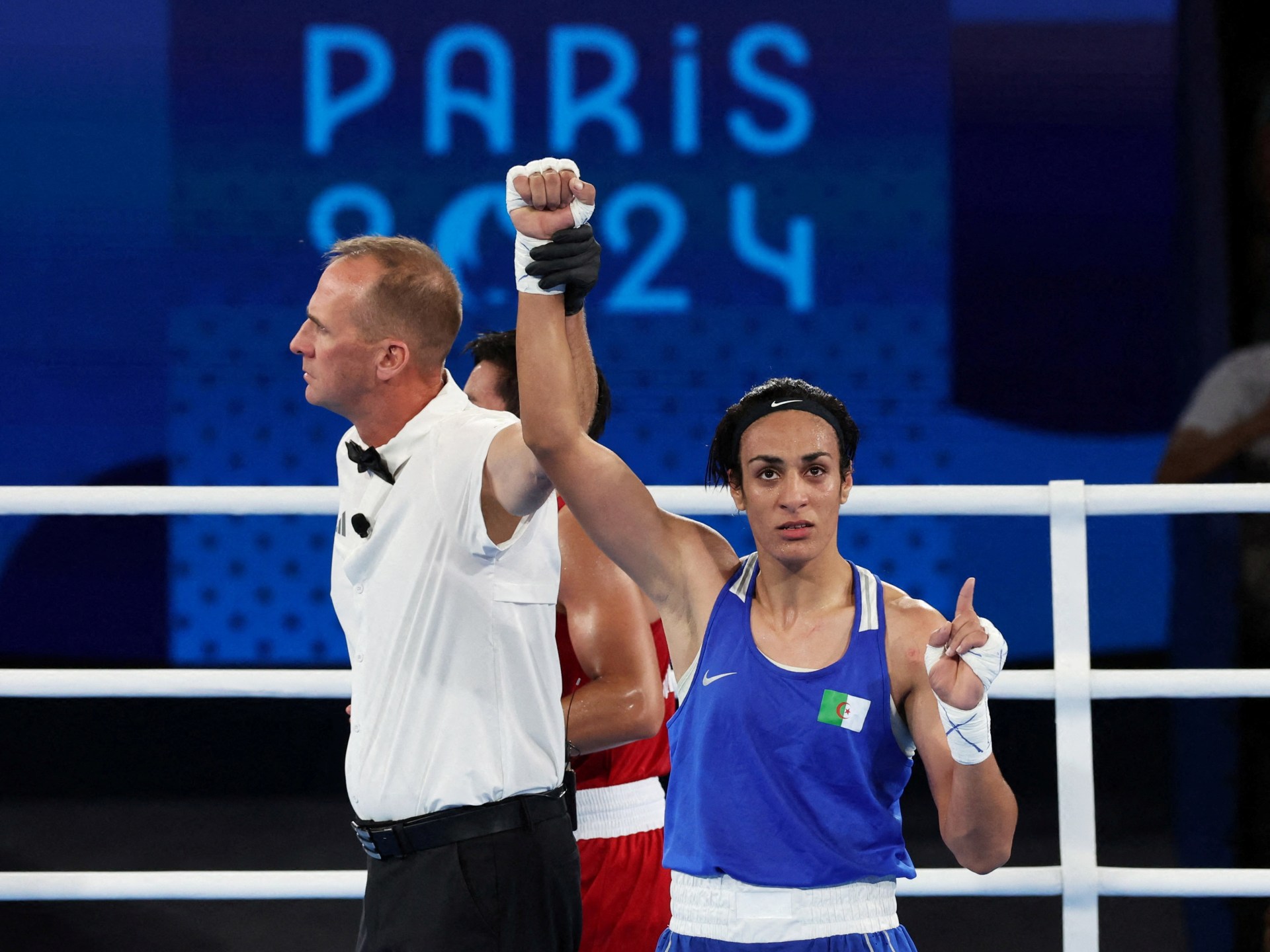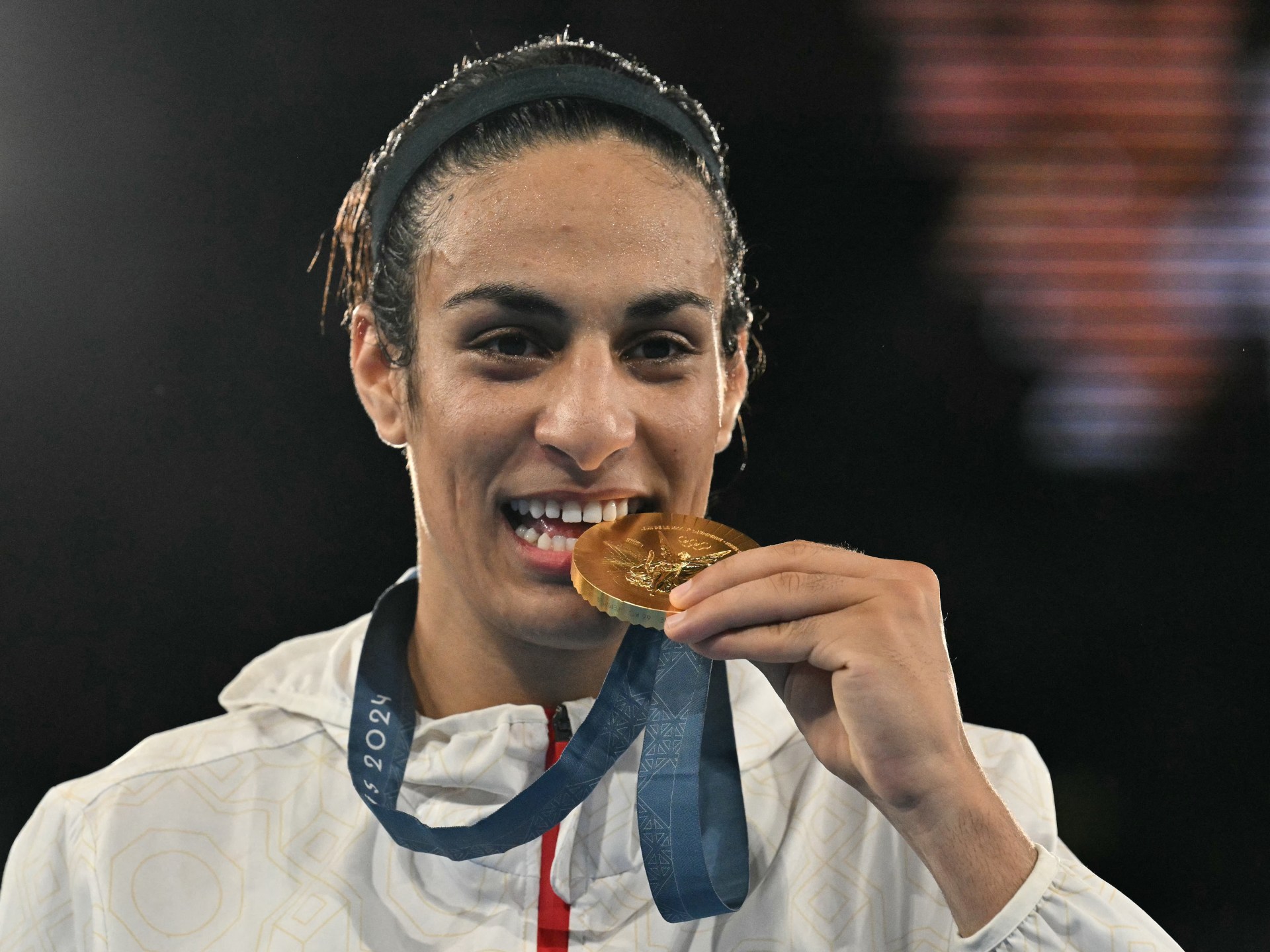
Algerian boxer Imane Khelif appears determined not to be browbeaten by the global controversy over her gender, defeating Thailand’s Janjaem Suwannapheng on Wednesday to cruise to the gold medal bout at the Paris Olympics.
Khelif exploded into the global spotlight when her Italian opponent Angela Carini withdrew just 46 seconds into their match. Carini promptly burst into tears, citing a punch to the nose harder than she had ever experienced in her life.
After it was reported that the International Boxing Association, which is not recognised by the International Olympic Committee (IOC), had disqualified Khelif along with Taiwanese boxer Lin Yu‑ting from last year’s world championships for failing an unspecified gender test, the accusations that both of them are male ignited.
I won’t speculate on Carini’s intentions as to whether she was deliberately presenting herself as a victim and Khelif as a male usurper. Carini claims she was simply upset at losing and was not making a political point, and later apologised to Khelif. Regardless, the damage was already done.
My book White Tears/Brown Scars looks at the historical and contemporary positioning of European (i.e. white) women as the pinnacle of both femininity and victimhood, and interrogates the power of what we commonly refer to as “white women’s tears”, but which I prefer to call strategic white womanhood.
In this dynamic, which plays out on both an individual and a national level, white women’s emotional distress is used as leverage to punish people of colour who happen to be in conflict with them. I argue that it is not so much the tears or even the person emitting them that are most important, but the protective urge that these tears generate in onlookers.
In this instance, the urge compelled an outpouring of public outrage, including from public figures such as author JK Rowling, former US President Donald Trump, and Italian far-right Prime Minister Giorgia Meloni to unite in condemnation.
Each of these figures came into it with their own ideological baggage to impose on Khelif’s body. JK Rowling, best known for objecting to trans women, summed it up as the “smirking” pleasure of a “male” beating up a woman and “shattering” her dreams. It seems lost on Rowling that under the guise of protecting women, she was actually attacking a woman.
Meloni didn’t go as far as claiming Khelif was a man in disguise but decried what she saw as “not an unequal competition”, stating that “athletes who have male genetic characteristics should not participate in women’s competitions. Not because we want to discriminate against anyone, but to protect the rights of female athletes to compete on equal terms.”
This statement, however, ignores that the history of women’s sport, from tennis to weightlifting to shot put, and yes to boxing, is peppered with athletes who did not conform to stereotypical, European standards of womanhood, including, ironically, European athletes.
Whereas we previously accepted that some women were indeed bigger, stronger or faster, than others, now it appears that many of us expect female athletes to be cookie-cutter images of each other and seek to punish those who do not conform. For all the growing awareness of non-binary gender, it seems we are growing less tolerant of any deviation from the stereotypical norm.
More disturbingly, it also appears that the issue of fairness in women’s sports is being used to propel a return to the era of race science in which “woman” was synonymous with “white”.
In 2016, South African middle-distance runner Caster Semenya (who would be banned from women’s competitions three years later), won gold at the Rio Olympics, followed by Francine Niyonsaba from Burundi and Margaret Wambui from Kenya. All three had faced allegations of not being real women, prompting tears from some of their European competitors, and compelling Poland’s Joanna Jozwik, who came in fifth, to declare, “I’m glad I’m the first European, the second white” (Canadian Melissa Bishop had finished fourth).
Fast forward to 2024, and this apparent nod to race science was echoed by Bulgarian boxer Svetlana Staneva, who following her loss to Lin Yu-ting, brought her fingers into an X sign and tapped them, seemingly to indicate she has XX chromosomes and imply that, unlike her Taiwanese opponent, she is a “real” woman.
Would this have become the emotionally charged topic it is now if Carini had simply withdrawn from the match without the emotional display? Would it have been interpreted as any other match in which one opponent was simply too good for the other on the day? It is impossible to say, but it is worth noting how suddenly Imane Khelif’s body became a topic of debate.
As many others have already pointed out, Khelif has been boxing in women’s competitions for many years, including at the 2020 Tokyo Olympics without these accusations arising. She has produced pictures of herself as a young girl, spoken of the challenges of boxing as a female in her Algerian culture, and has been defended by the IOC and Algerian officials.
All of which is to argue that this isn’t merely about “fairness”.
After Carini’s withdrawal, Khelif’s subsequent match was against Hungarian Anna Luca Hamori, who, in the lead-up, posted and deleted an image that I believe to be among the most significant in the entire affair because of how it lays the subtext bare. In this AI-generated image that Hamori sourced from Instagram, Khelif was not merely represented as a man towering over a dainty, vulnerable white woman but was denied humanity altogether and drawn as a supernatural, mythical beast.
This is Orientalism writ large, recalling centuries of representations of the “East”, in which non-white women have been variously depicted as either wretched, submissive victims desperately in need of saving by white men, or as masculine, animalistic creatures unworthy of protection, to contrast with the superior European women.
These representations personify how the West sees itself. Women’s bodies are the terrain on which the West wages its ideological battles. White women are represented as pure, innocent, and as needing to be defended at all costs because they symbolise Western civilisation itself. Black and brown women, on the other hand, have long been depicted as devoid of innocence and unworthy of protection because they too are avatars for their own “inferior” cultures.
That Hamori, who appears to be of similar height and build as Khelif, shared an image in which her avatar bears almost as little resemblance to herself as Khelif’s does to hers, is instructive. This is no longer about the literal battle between an Arab boxer and a European one, but is another iteration of the stale white cultural mythology that brown and Black men represent a unique danger to white women, and by extension, to the West.
Despite its centuries-long and ongoing dominance, the West continues to project an image of itself as a kind of underdog, a lone island of morality, purity, and civilisation under constant threat from barbaric Oriental hordes.
Every so-called “culture war” in the West is intractably tied to race because the West is built on self-defined notions of racial and cultural superiority that it explicitly draws on to justify global military and economic domination. In the past, European ideas of “race” drove settler-colonialism. Today, US-led neo-imperialism uses cultural inferiority to justify military intervention, as seen in Israel’s repeated intonations that it represents the front line of Western civilisation in the Middle East.
That this is all happening against the backdrop of the Gaza genocide, which is on the verge of escalating into a full-blown regional war, is not insignificant. This is how the Western imaginary seeks to reframe itself as the perennial victim under existential threat.
Even as Western powers unite in an iron-fisted resolve to pummel Gaza into debris and dust, as tens of thousands of civilians are killed, and as tired, traumatised Palestinian men dig what’s left of their families and communities out of the rubble with their bare hands, a sizeable chunk of the West has chosen this moment in time to illustrate itself as a fair maiden unfairly set upon by a demonic Arab man.
The views expressed in this article are the author’s own and do not necessarily reflect Al Jazeera’s editorial stance.






